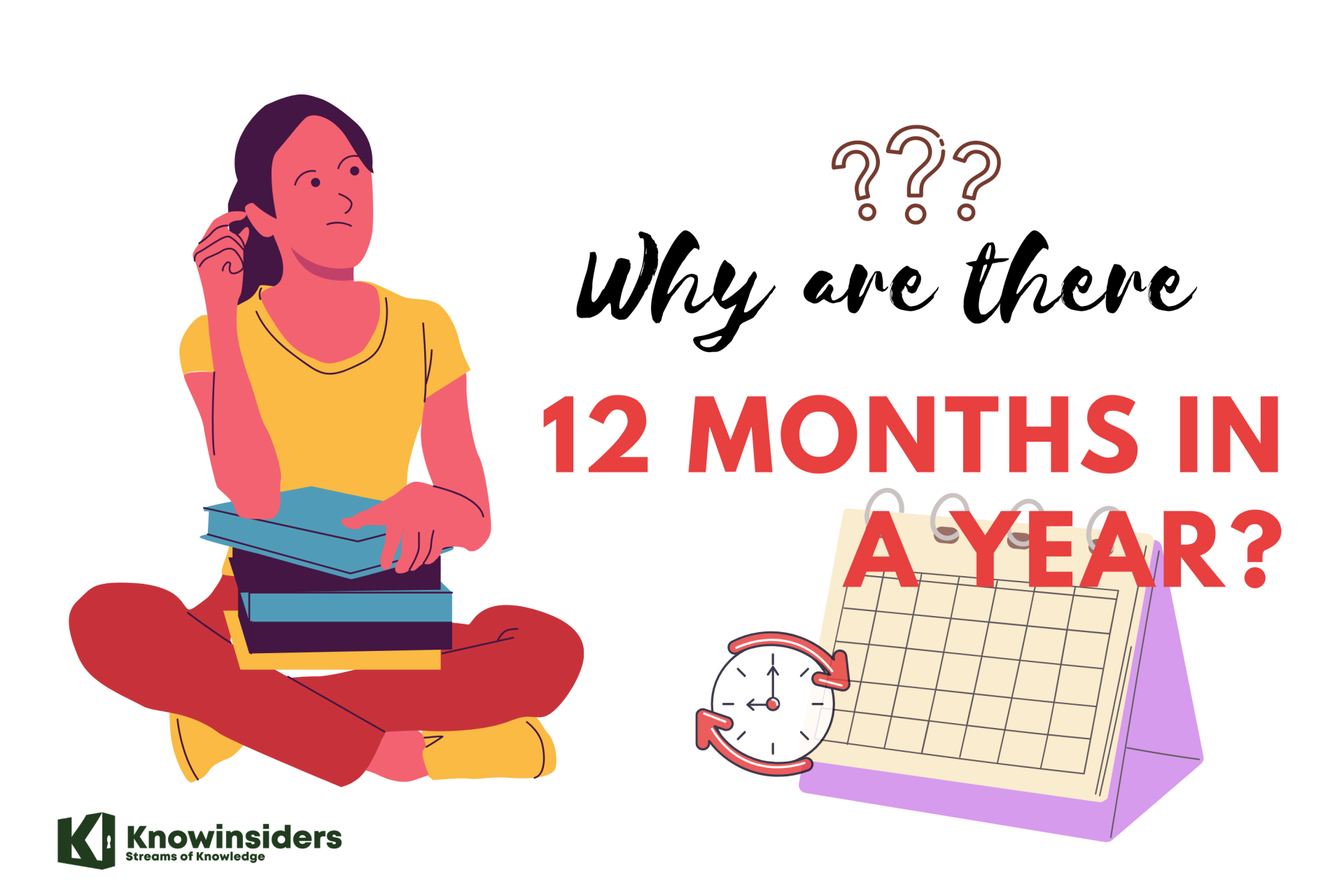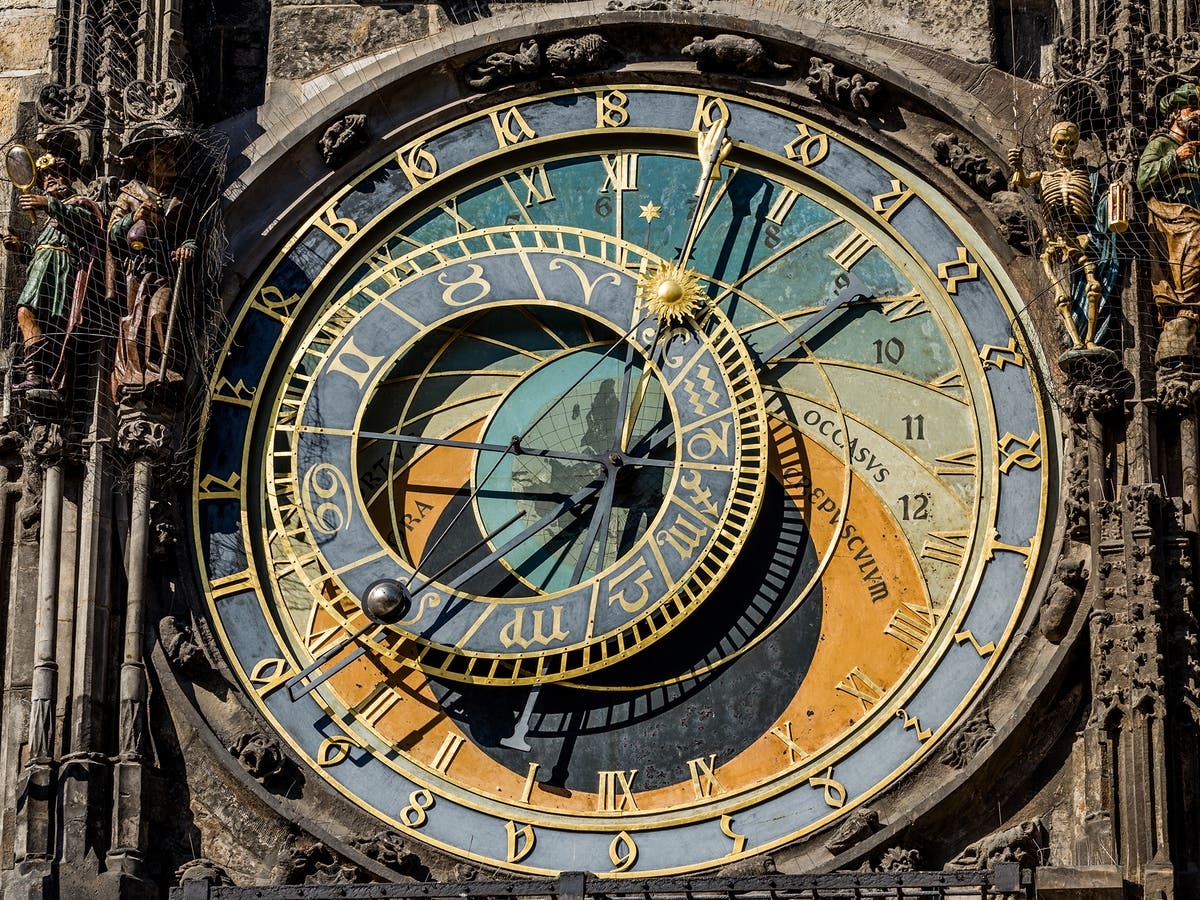Why are There 12 Months in a Year?
 |
| Why are there 12 months in the year? Photo: KnowInsiders |
People across the world follow the Gregorian calendar.
The world converted to the Gregorian calendar in 1752. Otherwise different people around the world followed different calendars. In fact people who do agriculture and farming, still use a combination of solar and lunar calendars.
Why are there 12 months in the year?
Julius Caesar's astronomers explained the need for 12 months in a year and the addition of a leap year to synchronize with the seasons. At the time, there were only ten months in the calendar, while there are just over 12 lunar cycles in a year.
The Gregorian calendar consists of the following 12 months:
-
January – 31 days
-
February – 28 days in a common year and 29 days in leap years
-
March – 31 days
-
April – 30 days
-
May – 31 days
-
June – 30 days
-
July – 31 days
-
August – 31 days
-
September – 30 days
-
October – 31 days
-
November – 30 days
-
December – 31 days
The months of January and February were added to the calendar and the original fifth and sixth months were renamed July and August in honor of Julius Caesar and his successor Augustus.
These months were both given 31 days to reflect their importance, having been named after Roman leaders.
 |
| Photo: The Independent |
The Romans named some of the months after their position in the calendar year: September means the 7th month, October the 8th, November the 9th, and December the 10th month. However, when January and February were eventually added and the beginning of the calendar year was moved to January, the position of these months no longer corresponded with the original meaning of their names. Today, we still call the 9th month of the year September, the 7th month.
The Islamic calendar, the Hebrew calendar, and the Hindu calendar also use months to divide up the year. Although the Gregorian calendar is the most commonly used calendar today, other calendars are still used in many parts of the world to calculate certain holidays and annual feasts.
| Old Names of Months Months in the ancient Roman calendar include: *Mercedonius - an occasional month after February that would be used to realign the Roman calendar. Today we use Leap Day for this alignment. *Quintilis - renamed July in honor of Julius Caesar in 44 BCE. *Sextilis - renamed August in honor of Roman Emperor Augustus in 8 BCE. |
>> Why the Sky is Blue - Scientific & Ancient Explanation
Why is the number of days in a month not equal?
The ancient Romans, like ancient civilizations before them, based their concept of the month on the Moon. Unfortunately, the lunar cycle is approximately 29.5 days, which does not divide evenly into the 365.25 days that make up a year.
As a result, the earliest ancient Roman calendars had months that were either 29 or 30 days. To make things even more confusing, the ancient Romans borrowed from the ancient Greeks to develop the idea of a 10-month calendar that left approximately 60 days unaccounted for.
 |
| Photo: Britannica |
For example, the ancient Romans started using a 10-month calendar in 738 B.C. that included the following months: Martius, Aprilis, Maius, Junius, Quintilis, Sextilis, September, October, November, and December. The names Quintilis through December are derived from the Latin words for five through ten.
To account for the remaining 60 or so days, Januarius was added to the beginning of the year and Februarius to the end of the year during Numa's reign around 700 B.C. The calendar stayed in that order until 452 B.C. when a small council of Romans, called the Decemvirs, moved February to follow January.
How about a ten-month year?
Ten months per year worked well enough for the ancient Romans. They spread the ten months across 304 days and ran their year from March to December. It was not until 700 BCE that they added January and February to make twelve months – 355 days – in a year. Later still, Julius Caesar reformed the calendar, adding ten days and a leap year every four years to bring it closer to the solar year. His Julian calendar was in use for many centuries from 45 BCE until it was gradually replaced from 1582 onwards by the more accurate Gregorian calendar.
If you ever wondered why the names of the last four months of our year (September to December) stem from Latin numbers which don’t correspond with their position in the year, you’ll find the answer in that ancient ten-month Roman calendar. So, for example, our twelfth month December stems from the Latin decem, meaning ten, because in those very early times it was the last or tenth month of the year.
>> Why Is Euro 2020 Not Called Euro 2021: Facts About The Name Changing
Would a 13-month year be more practical?
In the early 20th century, Moses B Cotsworth designed a calendar with 13 months, each with 28 days. He added an extra month in the summer and named it Sol. George Eastman, founder of Eastman Kodak, liked the convenience of the 13-month calendar and devised a similar system that his entire company used for 65 years before they eventually abandoned it in 1989.
The idea of the 13-month year never really caught on, failing mainly for religious reasons as it did not always maintain Sundays at weekends.
| Julius Caesar, Father of Leap Year Julius Caesar was behind the origin of leap year in 45 BCE. The early Romans had a 355-day calendar and to keep festivals occurring around the same season each year, a 22- or 23-day month was created every second year. Julius Caesar decided to simplify things and added days to different months of the year to create the 365-day calendar; the actual calculations were made by Caesar's astronomer, Sosigenes. Every fourth year following the 28th day of Februarius (February 29) one day was to be added, making every fourth year a leap year. In 1582, Pope Gregory XIII further refined the calendar with the rule that leap day would occur in any year divisible by four as described previously. |
 Why Do Tree Leaves Change Color? Which Leads to The Change? Why Do Tree Leaves Change Color? Which Leads to The Change? Albert Camus once said, "Autumn is a second spring when every leaf is a flower." Why tree leaves change color in Autumn, check out the ... |
 When is Saga Dawa Festival: Significance, Celebrattion, Places to Visit and Why "The Poor’s Day' When is Saga Dawa Festival: Significance, Celebrattion, Places to Visit and Why "The Poor’s Day' Saga Dawa Festival is observed by Tibetan Buddhist as one of the important festival in their society. Read on to know its significance and activities ... |
 Why the sky is blue - Watch this EXPERIMENT to Find out Yourself Why the sky is blue - Watch this EXPERIMENT to Find out Yourself In this video of EXPERIMENT, we show you why the sky is blue. |


























